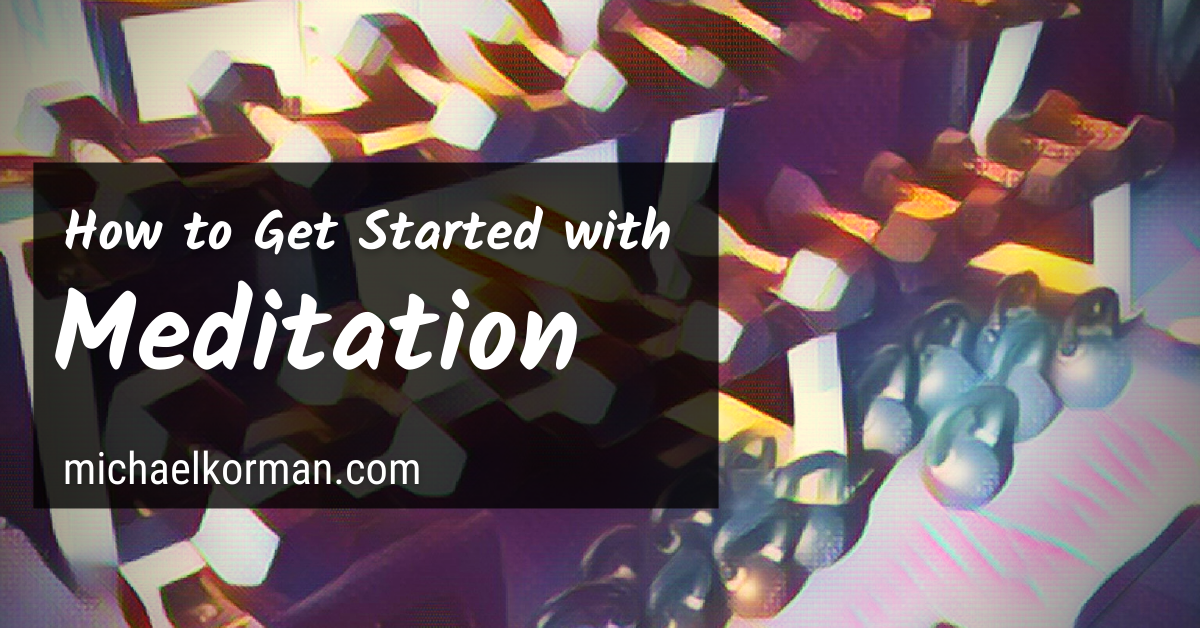Maybe you think meditation sounds kinda cool and you kinda think you might wanna do it once in a while.
That’s not good enough.
Meditation isn’t “cool”. It’s not like picking out window curtains that match your underwear.
It’s a sophisticated mental technology designed to fix inherent deficiencies in the human mind. It unties knots in your nervous system that are holding you back.
It’s not easy, it’s not relaxing, it’s not “me time”, and it’s not something you do after waking up like drinking coffee to clear your head before you start your day.
It’s more like learning French because you’re planning on moving to France and you don’t want to look like an idiot not being able to ask where the post office is in French.
“Yeah, yeah, but I’m not planning on moving to France yet. I’ll just screw around with meditation until one day maybe I’ll decide it’s worth doing.”
Hey, guess what???
You’re outta time. You’ve already moved into your life, and you’re already screwing it up.
At this point, it’s just damage control.
Still with me?
Here are the 3 things you need to do to become a master meditator:
- Become aware
- Develop equanimity
- Lock it in through multiple contexts
This is what I teach in my course No Problem.
1. Awareness (How to Stop Making Your Anxiety and Stress Worse)
There are meditation techniques involving visualization, energy manipulation, crystals, incense, deep breathing, etc. But, those aren’t the ones I do.
In No Problem, the idea is that you’re practicing “awareness” (seeing what’s there: sensations, thoughts, feelings, images, etc).
I started meditating to get rid of anxiety.
(It didn’t work.)
And, I didn’t understand how sitting with my eyes closed, trying to clear my mind, was supposed to do any good for me.
One day, while practicing music, I accidentally noticed that I was doing something counterproductive and weird. I had a knot in my nervous system (I thought I was doing one thing but I was actually doing something else).
When I stared at the knot long enough, it untangled. As a result, I stopped making my anxiety and stress worse. What I had read about meditation suddenly made sense…
Case Study
Anita once got a mean email from someone at work and she started to get anxious and felt like she had to respond right away.
But then, she noticed she was anxious. She realized she didn’t have to respond to the anxiety.
With that newfound awareness, she was able to de-escalate the conflict and focus on other things that were more important to her. She started using this strategy all the time with this person and it made things much better (her words, not mine).
2. Equanimity (How to Untangle the Craziness in Your Mind)
I used to try to “clear my mind” with meditation. Never worked.
One day, I accidentally let my mind be totally crazy and full of thoughts. I didn’t try to change any of it. Suddenly, I noticed that because I was observing the mind and not embedded in the mind, I was no longer adding to the craziness. The craziness started to resolve itself.
Many meditation techniques are designed to help you clear your mind. I never found any of them to work.
In No Problem, you practice “equanimity” (not reacting to what’s there).
So, if the mind is crazy, you let it be crazy without trying to change it.
Case Study
Jon, a classical singer, was freaking out because his voice kept cracking while singing a high note. He kept stopping in the middle of the song because he hated what was happening.
But, because he was a meditator, after enough frustration, his meditation training kicked in.
He allowed his voice to crack, and stopped stopping in the middle of the song.
Eventually, once he stopped freaking out about the way his voice sounded, he was able to calm down and then it became intuitively obvious to him why his voice was cracking.
Of course, he could then fix it easily.
3. Multiple Contexts (How to Handle Stressful Situations)
I used to put off meditating because my life was too stressful. I said, “oh, I’ll do it when I have time.”
One day, I was stressed out and overwhelmed. I didn’t meditate, but I somehow paused during my day for long enough for some residual meditation to come online. I caught a glimpse of how I was reacting to my stress.
This made it so that I could change how I reacted, and as a result, the stress began to diminish as I stopped making stupid choices.
In No Problem, we don’t try to attack stress directly or try to handle stressful situations directly. The idea behind the meditation is that it gives you tools to handle it. It’s like going to the gym and getting stronger so that you can lift heavy furniture later on.
We practice this stuff in a controlled environment (meditation) so the skills are there for us when we need them.
Case Study
Rachel was telling me about how she meditates every single day no matter what kind of mood she’s in. Whether she’s relaxed or stressed out, doesn’t matter. She told me it was precisely because she meditates during every mood that she can handle whatever life throws at her.
What To Do Next
If you’re new to meditation, check out my guided meditation that will get you started.
—Michael

Leave a Reply